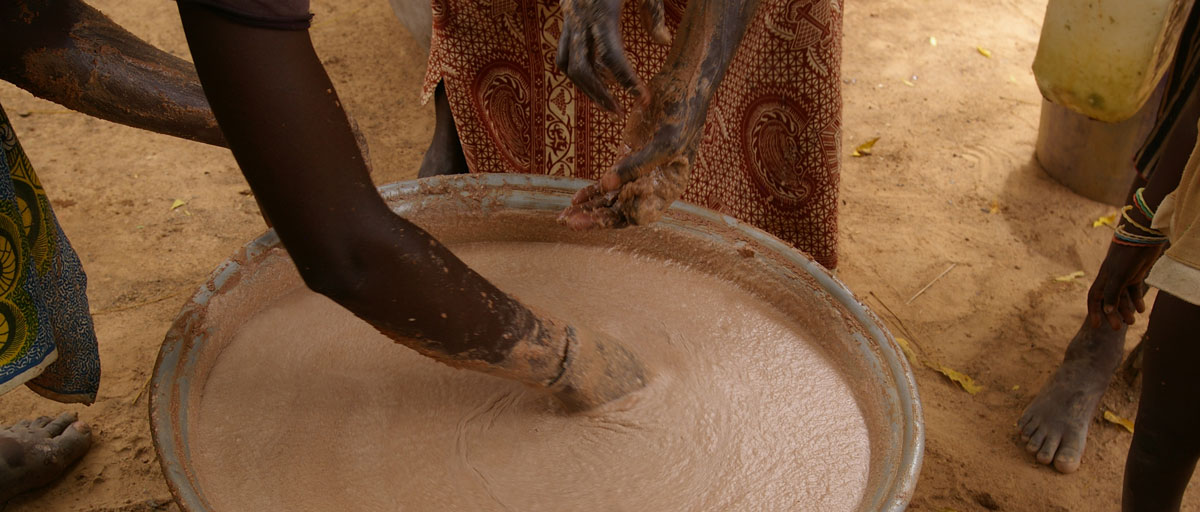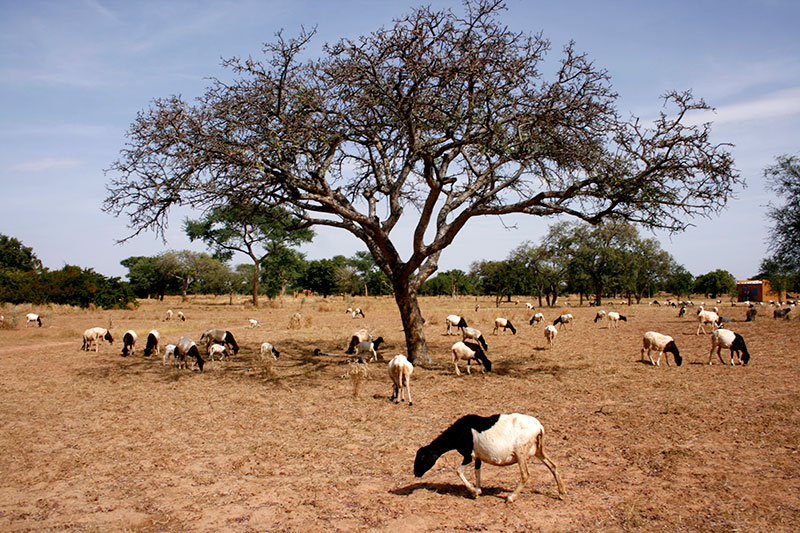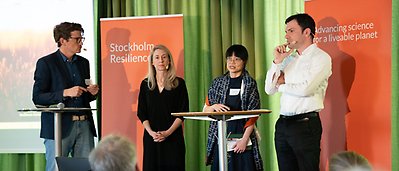
Women extracting shea butter from crushed shea kernels, Burkina Faso. Photo: H. Sinare
Trees and shrubs in Sahelian landscapes
Densities of trees and shrubs have increased since severe droughts in the 1970s and 1980s but species composition in the landscape has changed, with a risk of ecosystem services losses
Multiple ecosystem services from trees and shrubs in Sahelian landscapes, but knowledge of landscape effects lacking
Provisioning ecosystem services from a wide range of tree and shrub species are well documented across the Sahel, although the ecosystem service terminology seldom is used.
Nutrition, medicine, fodder, construction material and firewood are common uses while a few species are well documented as important income sources.
Regulating ecosystem services, including the effects of trees on crop yield are studied for fewer species. Particularly, studies of landscape effects are lacking. [Sinare & Gordon 2015]
Increasing tree and shrub cover but changing species composition, with a risk of ecosystem service losses
Tree and shrub cover has recovered since the droughts that struck the Sahel in the 1970s and 1980s [Hänke et al 2016; Baggnian et al 2014], which can seem to be in contrast to a dominant degradation and desertification narrative of the region.
Changing management by farmers to maintain sprouting trees and shrubs on their fields has contributed to this increase. However, the species composition in the landscape is changing. An increase in exotic and drought tolerant species at the expense of savannah species that require higher rainfall, and which in many cases are traditional multi-purpose species, has been observed in Burkina Faso [Hänke et al 2016].
In Niger, only a few common species have a sufficiently good rejuvenation on farmers’ fields, and several species are almost absent among younger trees and shrubs [Baggnian et al 2014]. This has impact on the set of ecosystem services generated in the landscapes, where some services are lost.

Trees are integrated on fields in Sahelian agricultural landscapes. They provide ecosystem services such as food, fodder, construction materials and firewood, as well as shade for humans and livestock. Here sheep grazing harvest residues in Burkina Faso. Photo K. Malmborg
Content facts...
Hanna Sinare is a postdoctoral researcher for GRAID working with synthesising SRC research on social-ecological systems, ecosystem services, and development in the West African Sahell.
Line Gordon is the deputy director and deputy science director at the Stockholm Resilience Centre. She is also assistant professor at the centre with a focus on freshwater resources, ecosystem services and food production
Elin Enfors Kautsky's research centers on pathways for transformative change towards sustainability, and she also leads a section of the GRAID programme, which focuses on operationalizing resilience thinking in practice.
LATEST NEWS
-

Research news | 2024-07-05
Do hunting and fishing bring us closer to nature?
Sustainably harvesting wildlife can foster an increased sense of stewardship, a new article in Nature Sustainability argues.
-

General news | 2024-06-18
Centre leadership appointed for another term
Centre Director Line Gordon and Centre Deputy Director Lisen Schultz have been appointed to continue in their respective positions for another three years. The appointment was made by Stockholm University leadership
-

General news | 2024-06-12
Centre science featured in new Spotify podcast hosted by Alexander Skarsgård
“How We Fix This”, a new podcast series from Spotify and Norrsken, delves into concrete solutions to some of the world's most pressing sustainability issues. It is hosted by Emmy and Golden Globe award-winning actor Alexander Skarsgård and features several Centre researchers.
-

General news | 2024-05-27
Centre researcher Peter Søgaard Jørgensen joins the Young Academy of Sweden
Centre researcher Peter Søgaard Jørgensen has been elected into the Young Academy of Sweden, a junior version of the Swedish academies, including the prestigious Royal Swedish Academy of Sciences
-

General news | 2024-05-20
First Swedish citizens' assembly: Sweden needs to be united on climate
Make climate change a school subject, invest in high-speed trains and make public transport more reliable, equal and cheaper. These are 3 of 22 proposals from Sweden's first national citizens' assembly on climate change
-

General news | 2024-05-17
"If the planet doesn’t work, we will not be able to live on it”
The decisions that humanity makes this decade will shape the living conditions on our planet for many generations to come.




